Abstract
Pigeons were studied in two experiments designed to explore the effects of deprivation level upon responding in each link of a two-link chained schedule. The stimulus associated with the terminal link of the chain can be both a discriminative stimulus (SD) for responding in the presence of the stimulus and a conditioned reinforcer (Sr) for responding in the preceding link. Previous findings have indicated that the Sr function was more readily weakened by satiation than was the SD function, i.e., the rate of responding decreased more rapidly in the initial link of the chain than in the terminal link. The first of the present experiments, in which tests were conducted after a series of sessions, produced different results: rates of responding in the two links declined simultaneously. The second experiment supported the hypothesis that the effects of satiation interact with the duration of maintenance on the satiation procedure: in early sessions the Sr function was more readily disrupted, but in later sessions the rates of responding in the two links declined simultaneously. Subsequent to this extensive series of identical sessions, the pigeons' deprivation level was altered before a session by pre-feeding the pigeons up to their normal post-session weights. The rates of responding failed to reflect fully this change in deprivation in the first such session, suggesting that the pigeons' behavior had become partially independent of deprivation level.
Full text
PDF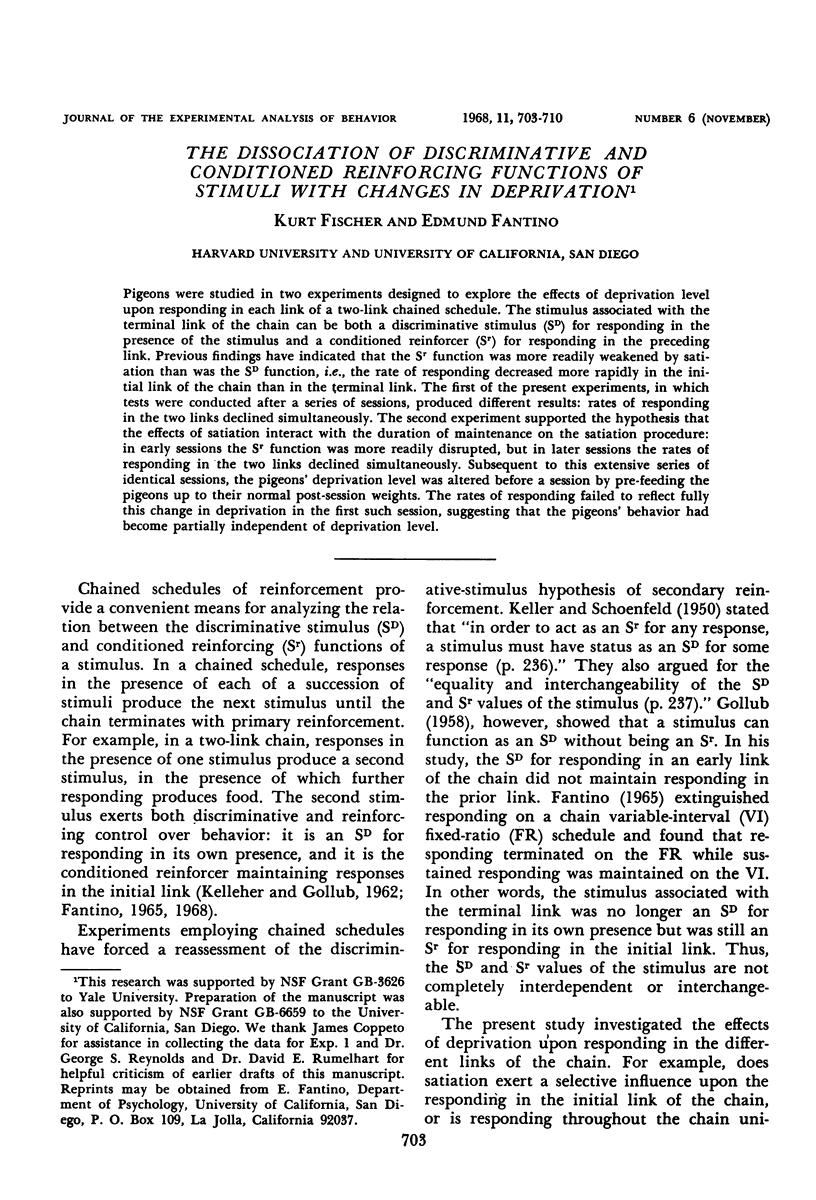
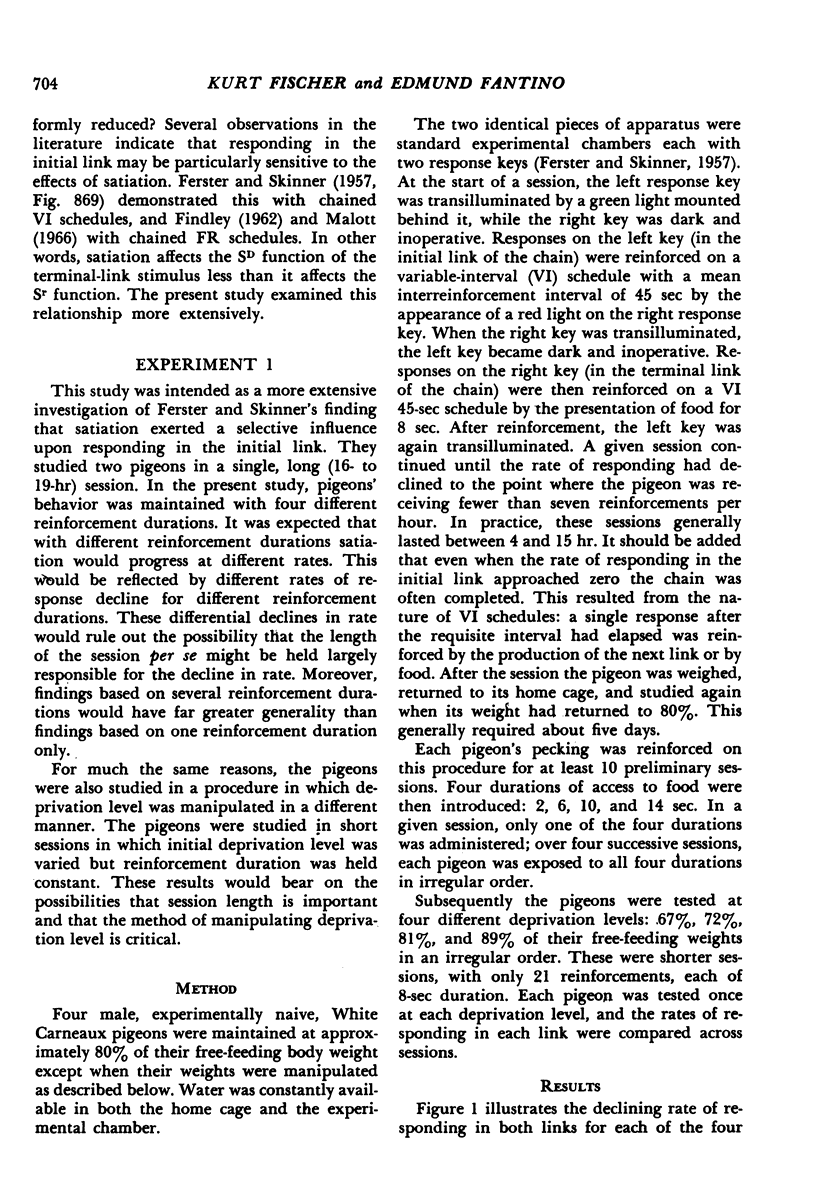
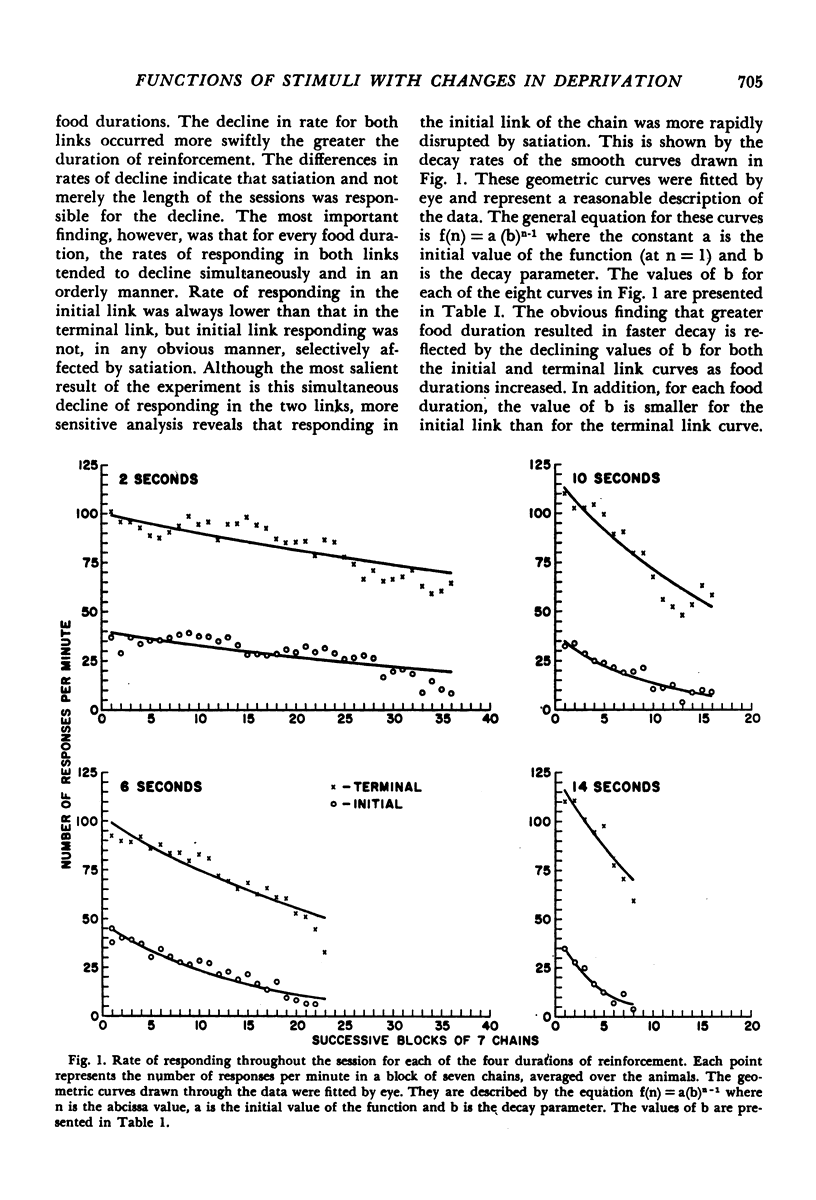
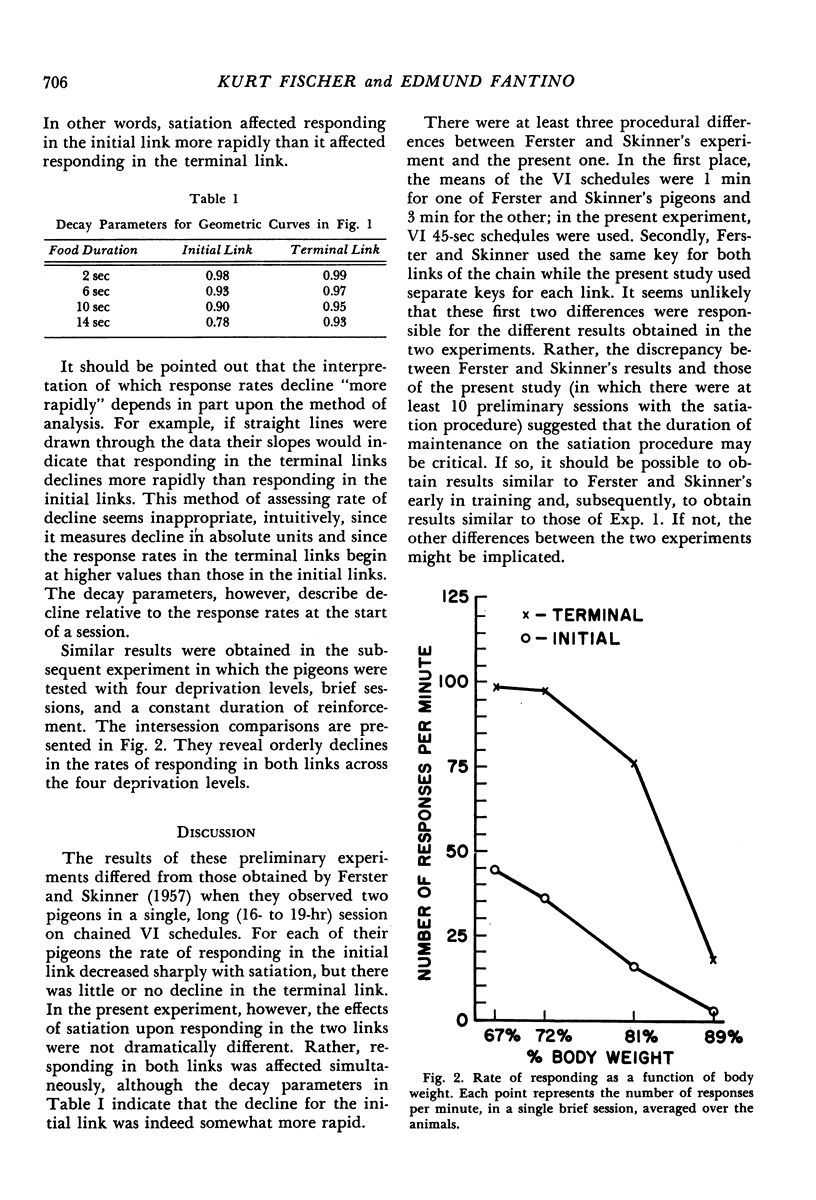
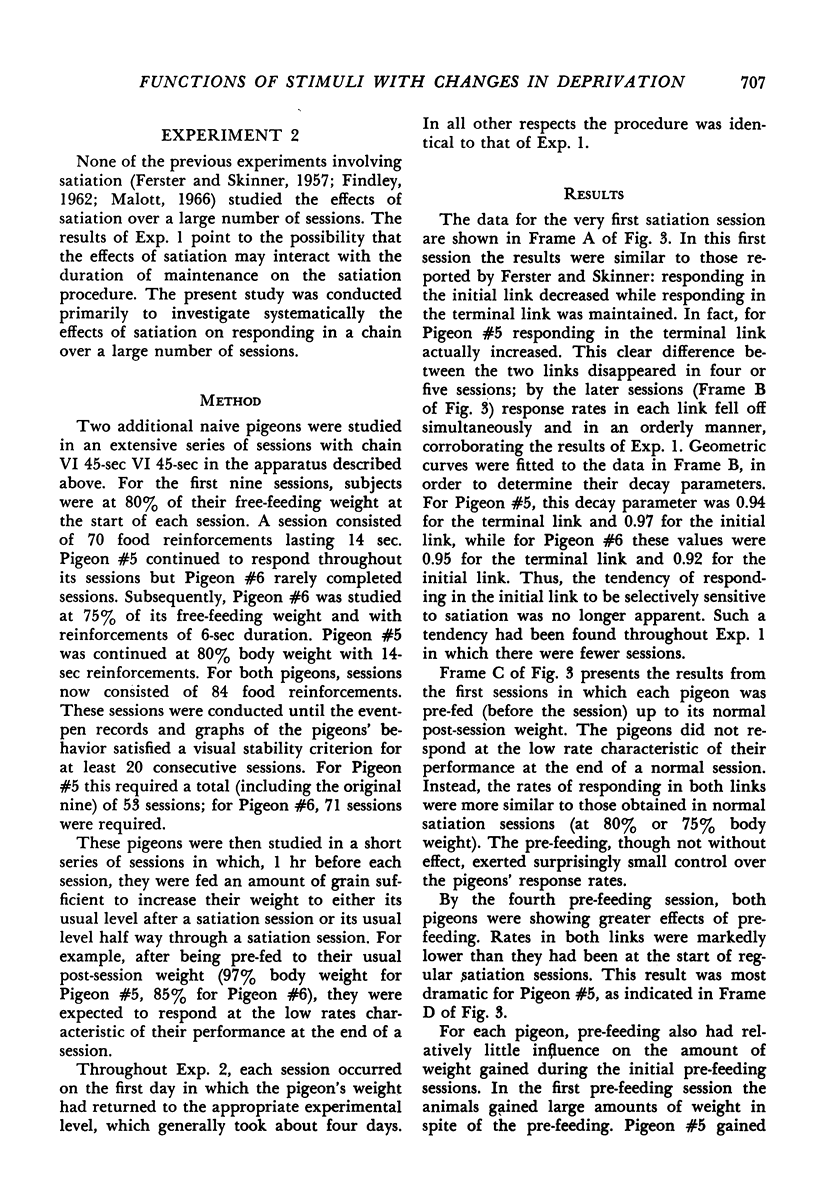
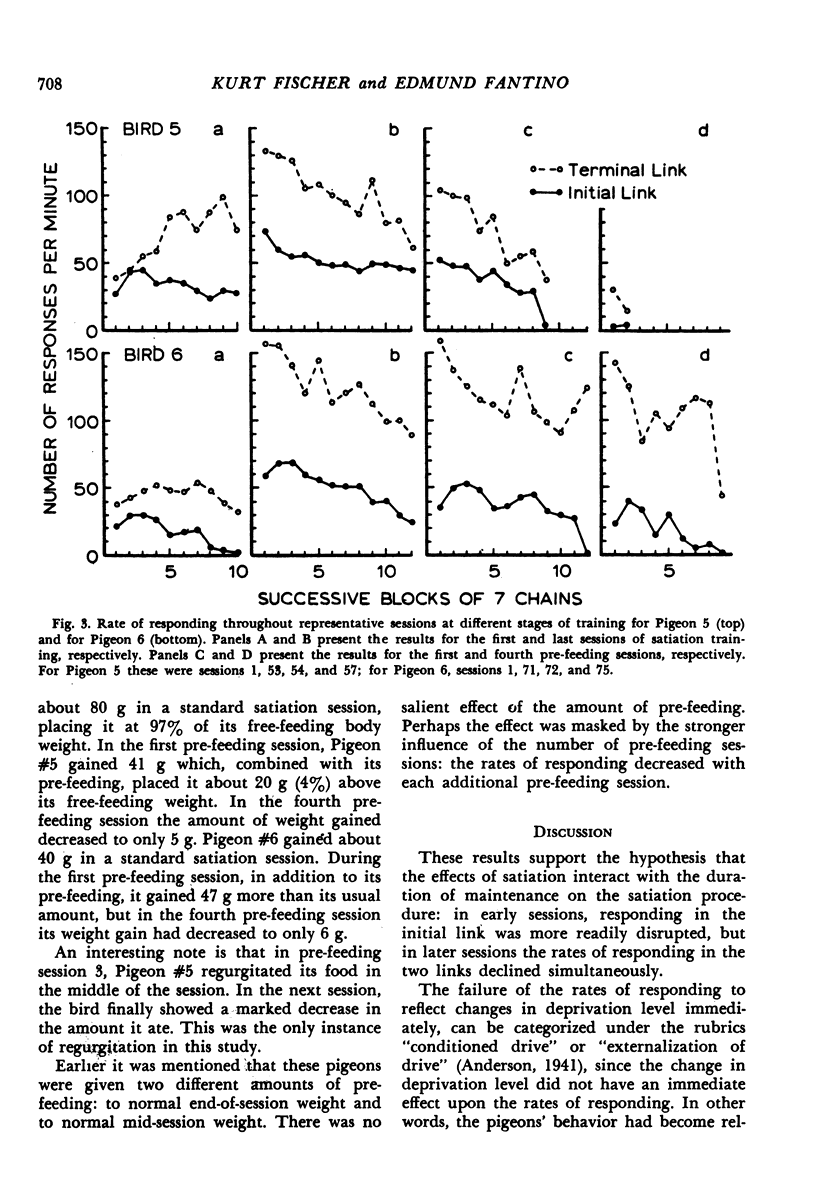
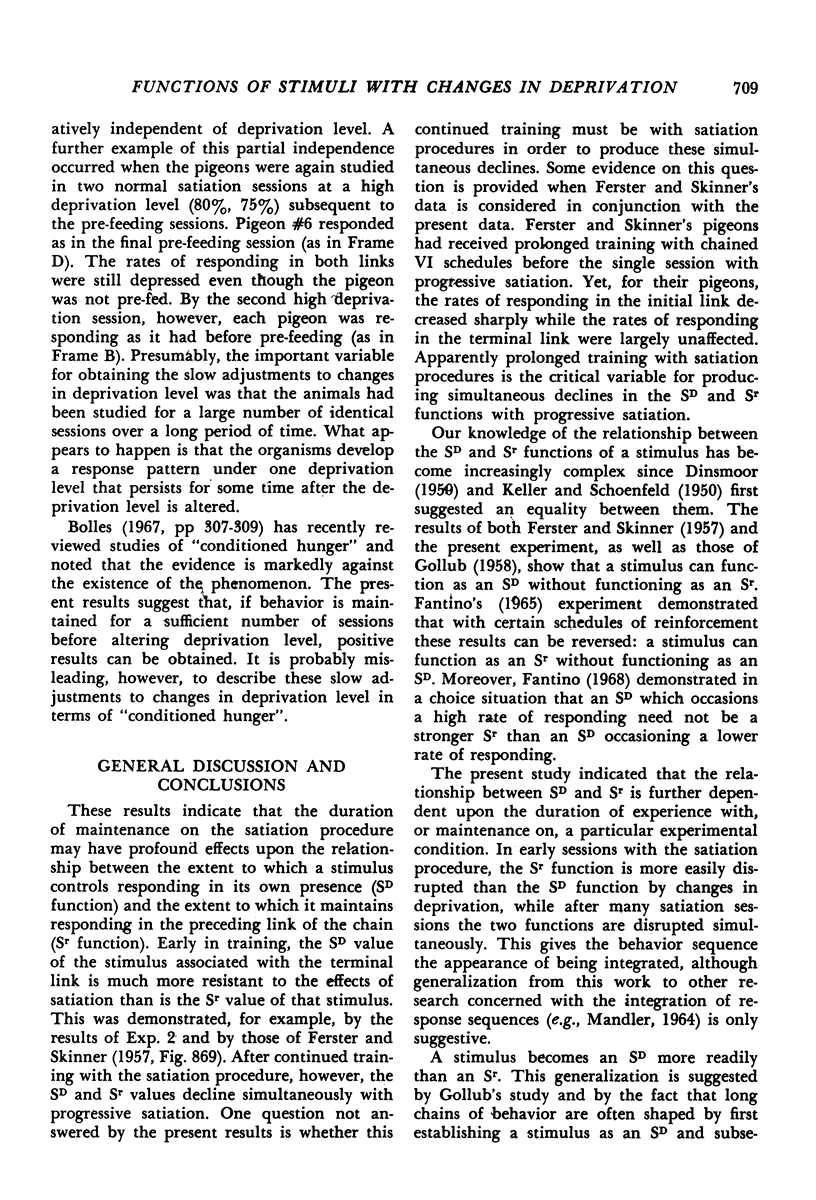
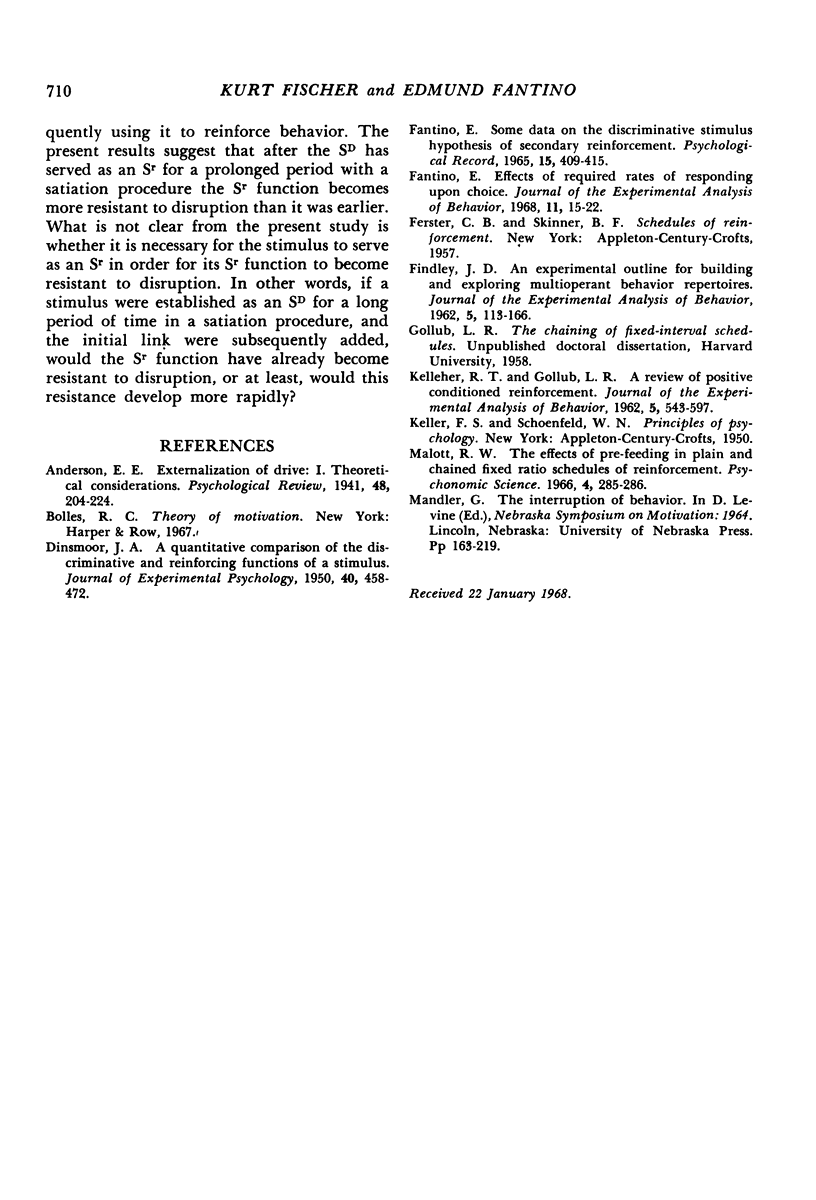
Selected References
These references are in PubMed. This may not be the complete list of references from this article.
- DINSMOOR J. A. A quantitative comparison of the discriminative and reinforcing functions of a stimulus. J Exp Psychol. 1950 Aug;40(4):458–472. doi: 10.1037/h0056266. [DOI] [PubMed] [Google Scholar]
- FINDLEY J. D. An experimental outline for building and exploring multi-operant behavior repertoires. J Exp Anal Behav. 1962 Jan;5(Suppl):113–166. doi: 10.1901/jeab.1962.5-s113. [DOI] [PMC free article] [PubMed] [Google Scholar]
- Fantino E. Effects of required rates of responding upon choice. J Exp Anal Behav. 1968 Jan;11(1):15–22. doi: 10.1901/jeab.1968.11-15. [DOI] [PMC free article] [PubMed] [Google Scholar]
- KELLEHER R. T., GOLLUB L. R. A review of positive conditioned reinforcement. J Exp Anal Behav. 1962 Oct;5:543–597. doi: 10.1901/jeab.1962.5-s543. [DOI] [PMC free article] [PubMed] [Google Scholar]


